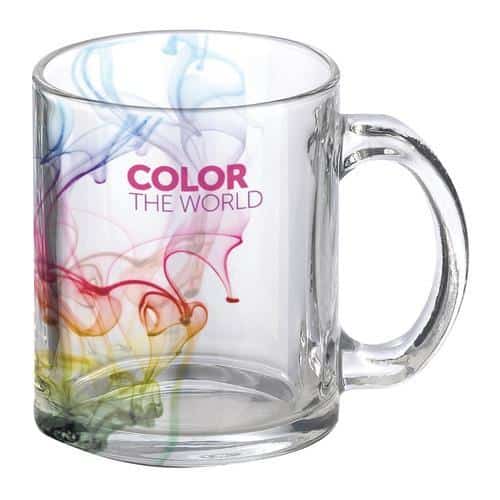Many of us have the misconception that sublimation can only be done on fabrics but in reality, you can sublimate on a number of different surfaces such as glass, aluminum, and even wood. Sublimation on glass is done on a large scale to create many useful items for personal use and also for businesses. The products include glass plates, glass mugs, bottles and so much more. There are some noticeable differences when you sublimate on the glass as opposed to on fabric and we will discuss them in detail later in this guide.

Why Sublimate on Glass?
Sublimation printing on glass surfaces is a very popular way of creating unique glass products such as glass plates, glass mugs, bottles, etc. Glass sublimation is also used to make jewelry and other ornaments by printing one surface of the glass element. The printed pattern can then be seen through the other side and the shape of the glass element determines how the print will appear on the other side. You can experiment with different shapes of glass to get interesting results for your products.
What do you need to Sublimate on Glass?
Here is a list of all the different items you will need in order to print glass through the sublimation method, take a look.
- Sublimation Printer
- Sublimation Paper
- Glass Substrate
- Heat Resistant Tape
- Teflon Sheet
- Heat Press
If you don’t know the basic material, that you need to start sublimation, then here is the list of materials that you need to start sublimation.
How to Sublimate on Glass?
- Place the printed sublimation sheet containing the design on the glass and fix it in place using heat-resistant tape. It is best practice to leave one-sixteenth of an inch of margin for a bleed on the sublimation sheet for a seamless print.
- The first layer on the heat press will be a Teflon sheet. A Teflon sheet is used to protect the surface of the heat press from wear and tear.
- Now place the Nomex pad over the Teflon sheet. Nomex pads are thick rubber pads that evenly spread the pressure over the sheet so there is even pressure while the dye is being transferred in the heat press.
- Put a layer of parchment paper so the ink does not get to the Nomex pad.
- Place the sublimation sheet and glass substrate on the parchment paper, sublimation sheet below, and glass above.
- Put another Teflon sheet on top and press down the heat press. The temperature of the heat press should be 400 degrees Fehreheneit and hold it for a duration of 3:30 minutes.
- After the duration of the print is complete, release the press and remove the sublimation paper from the glass element. Be careful of the hot temperature of the glass in this step as it can get very hot.
You can also sublimate on socks, here is the guide for sublimation on socks.
Conclusion
This was our complete guide on how glass sublimation works and how you can leverage this printing technique to create unique products for your business and yourself. If you have any questions regarding this method of printing on the glass then let us know using the comment section below and we will get back to you with the right answers.

